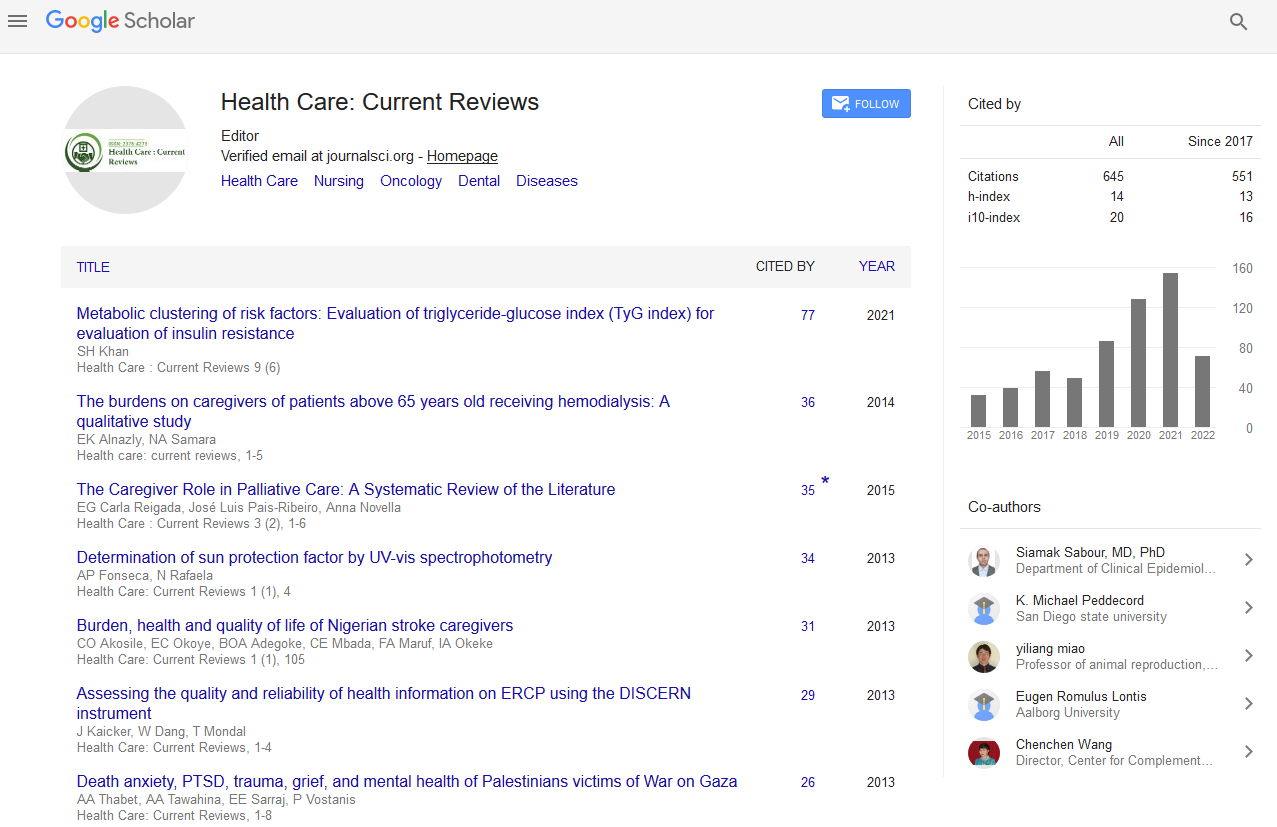PMC/PubMed Indexed Articles
Indexed In
- Open J Gate
- Academic Keys
- RefSeek
- Hamdard University
- EBSCO A-Z
- Publons
- Geneva Foundation for Medical Education and Research
- Google Scholar
Useful Links
Share This Page
Journal Flyer

Open Access Journals
- Agri and Aquaculture
- Biochemistry
- Bioinformatics & Systems Biology
- Business & Management
- Chemistry
- Clinical Sciences
- Engineering
- Food & Nutrition
- General Science
- Genetics & Molecular Biology
- Immunology & Microbiology
- Medical Sciences
- Neuroscience & Psychology
- Nursing & Health Care
- Pharmaceutical Sciences
IMPROVING PATIENT SAFETY AND QUALITY THROUGH CULTURE, EVIDENCE-BASED PRACTICES, AND ADOPTION: STEPS TOWARDS COMPLIANCES TO PATIENTS SAFETY GOALS AT THE AGA KHAN SECONDARY HOSPITALS
8th World Congress on Healthcare & Medical Tourism
November 17-18, 2016 | Dubai UAE
Rozina Shazad Ramji
The Aga Khan University Hospital, Pakistan
Scientific Tracks Abstracts: Health Care: Current Reviews
Abstract:
Background: Patient safety was defined by the IOM as �??the prevention of harm to patients.�?�1 Emphasis is placed on the system of care delivery that (1) prevents errors; (2) learns from the errors that do occur; and (3) is built on a culture of safety that involves health care professionals, organizations, and patients. Rationale for Selection: In 2015, each 6 International Patient Safety Goals measured as an key performance indicators against the bench mark of 90 %and it has been identified that SHs has not meeting the targets. In addition in JCIA gap audit the compliances were 4.5/10. These results were took management in to serious action to work on the areas of opportunities. Project Mission or Goals: The project aimed to identifying areas of opportunities, to do in -depth analysis of process, designing action plans, execution of plans by implementation of strategies followed by sustainable Plans and strategies. Team Composition: A multidisciplinary team with representation of all stake holders. Data Collection Methodology: The Deming�??s cycle was used as project methodology. A multidisciplinary team did focused clinical rounds; based on gap assessment findings, action plan developed and ensured compliances of action plans by project team at regular intervals, followed by sustainable plans and strategies. Use of Quality Improvement Tools: Brainstorming sessions were held which provided insight into the problem and revealed defects in the system. The identified causes were displayed using cause and effect diagram (Ishikawa or fish bone). Post project sustainability of desired outcomes: Through this project, challenges were successfully identified and addressed. Implemented strategies resulted improvement in the IPSG compliances. Conclusions: Patient safety is a new healthcare discipline that emphasizes the preventing, reducing, reporting, and analysis of medical error that often leads to adverse healthcare events. The resulting patient safety knowledge continually informs improvement efforts such as: applying lessons learned from business and industry, adopting innovative technologies, educating providers and consumers, enhancing error reporting systems, and developing new economic incentives.
Biography :
Rozina Shazad Ramji is working as senior health care professional at The Aga Khan University Hospital, Pakistan
Email: rozina.shazad@aku.edu


